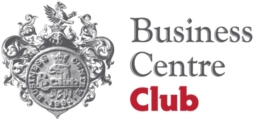According to research, most accidents occur at home, so when caring for your client in a home environment, you should be prepared for a variety of incidents. After reading this article, you will learn how to respond properly in specific accidents.
First aid for burns
Burns are tissue damage caused by the action of high temperatures on the skin, such as from open flames, the sun or from being doused with hot liquid, gas burns. Also, electric current can cause burns if it comes into contact with the body (electric shock).
Burns from contact with fire or sun are not the same as liquid/gas burns, even if they cause similar symptoms. A liquid/gas burn is said to occur when hot liquids or gases act on the body, damaging the skin.
Skin damage begins at 42°C – the epidermis becomes necrotic after just 6 hours. At 55°C, 3 minutes of action is enough, and at 70°C only 1 second!
Diagnosis:
- Redness up to the formation of blisters on the affected skin areas
- Severe pain
- Possible heat sources suggestive of a burn, such as an open fire on a grill
Assessment of the situation:
- Are there other sources of danger?
- Open flames (such as a grill)
- strong sunlight
- flammable substances
- Where is the burn located?
- How severe is the burn?
- 1st degree: superficial burn with reddening of the skin and pain (e.g. sunburn)
- 2nd degree:
- Grade 2a: superficial burn with reddening of the skin and pain and an open, moist wound + formation of swelling and blisters filled with yellowish serous fluid
- Grade 2b: superficial and deeper burns with little or no pain + blisters due to accumulation of fluid under the skin + moist, whitish wound
- Grade 3: deep burns + yellow or black discoloration of the skin and detachment of skin flaps – the full thickness of the skin is damaged, often deep tissues as well.
As a result of damage to nerve endings, the victim with such severe burns does not feel pain.
Action:
- Extinguish the fire or source of fire if necessary
- Address the affected person
- Check if he or she is breathing
Option 1: The affected person is responsive and breathing
- Arrange the affected person in a safe place
- Remove burned clothes (only if they are not stuck to the skin)
- Make an emergency call to summon emergency medical services
- Cool minor burns with lukewarm water
- Cover extensive burn wounds with a sterile dressing with silver ions
- Keep the body warm
- Soothe the injured person and control breathing
Option 2: The injured person is unresponsive but breathing
- Call for help – if there are any people nearby, ask them to help you
- Arrange the injured person in the lateral fixed position
- Make an emergency call to summon an ambulance
- Cool minor burns with lukewarm water
- Cover extensive burn wounds with a sterile dressing with silver ions
- Keep the body warm
- Reassure the injured person and check for breathing
Option 3: The affected person is unresponsive and not breathing
- Call for help – if there are any people nearby, ask them to help you
- Turn the injured person on his back and keep the body warm (no cooling burns!).
- Make an emergency call to summon an ambulance
- Start rhythmic CPR with 30 chest compressions for 2 breaths
- Check if the victim has regained consciousness and started breathing, if not, continue CPR until the ambulance arrives
- Large burns are no longer cooled with cold water, as it cools the whole body, and thus can lead to cardiovascular problems. For this reason, even for wounds with a small area, cooling is done only with lukewarm water.
First aid in case of poisoning
Poisoning can occur when external substances enter the body that cannot be processed or affect the functioning of the body. There are various causes of poisoning, such as gases (in the case of carbon monoxide volatilization – chad poisoning), soaps and alkalis (e.g., dishwashing liquid, laundry detergent), as a result of skin contact (e.g., certain pesticides) or injection (in the case of a drug or drug overdose).
Poisoning can lead to toxic shock. Prompt treatment and medical supervision are therefore essential to ensure that the poison does not cause long-term damage to the body and that no residual poison remains in the body.
Diagnosis:
- Nausea, vomiting, diarrhea
- Sudden abdominal pain or cramps
- Severe headache, dizziness and “darkness before the eyes”
- A state of agitation
- Signs of shock such as pale, sweaty skin
- Disturbed consciousness, slowed reactions, up to unconsciousness
- Respiratory distress or apnea, bluish coloration of lips due to lack of oxygen in the body
- Possible rolling foam from the mouth, depending on the type of poison – occurs with soap, for example
Observation:
- Is there any indication of the poison ingested?
- residues of toxic substances can be seen
- drug packages are lying around
- eyewitness observations
- Does the location allow you to draw indirect conclusions about the cause of the poisoning?
- Rural region, e.g. zoonotic poisons like a viper bite
- garden, e.g. so-called contact poison like pesticides
- household, e.g. soaps and alkalis such as laundry detergent
- Is it possible to secure poison residues/containers/packaging without endangering your own health?
Action:
- Address the affected person
- Check for breathing
Option 1: The affected person is responsive and breathing.
- Arrange the affected person in a safe place
- In case of abdominal pain or cramps and/or weakness and/or shock: lay the victim down and turn the head to the side (to avoid the risk of suffocation during possible vomiting)
- In case of shortness of breath: help the casualty sit up with his head bowed (so that he can vomit if necessary)
- Make an emergency call to summon an ambulance
- Keep the body warm
- Give ice to suck on – if there are traces of soap and alkali poisoning, under no circumstances give water to drink, as this leads to foaming in the stomach!
- Do not stop to calm the affected person and control his breathing
Variant 2: The affected person is unresponsive, but breathing.
- Place the victim in the lateral fixed position (to minimize the risk of suffocation during possible vomiting)
- Make an emergency call to summon an ambulance
- Keep the body warm
- Control the breathing process
In order to receive an accurate diagnosis from a doctor, in case of poisoning, it is important to provide leftover poison or at least clues as to the cause of poisoning. Always pay attention to your own safety, i.e., never touch leftover poison/vomit/containers with your bare hands!
First aid for brain disorders
Brain disorders can often be detected by visible external injuries to the head. In addition, people suffering from disorders related to brain function have difficulty controlling their bodies, for example, due to gaps in memory or paralysis on one side.
In the case of head injuries or acute disorders such as stroke – the head and upper body must be elevated. This will avoid further pressure on the brain.
In the event of a stroke, first responders can only call the emergency number and wait with the victim for emergency services to arrive.
A stroke can be recognized by:
- speech disorders
- visual disorders (double vision, blind spots)
- slurred speech
- severe dizziness
- disorientation
- facial asymmetry with paralysis on one side.
How to diagnose a stroke? – F.A.S.T. test.
The abbreviation F.A.S.T. in expansion stands for: FACE – face, ARM – arms, SPEECH – speech, TIME – time. If you suspect that someone around you may be about to have a stroke, all you have to do is ask them to perform the three simple steps that are part of the F.A.S.T. test:
F – face: ask the person to smile. Observe if one side of his face falls,
A – arm (shoulders): ask the person to raise both arms. Note if one arm falls down,
S – speech (speech): Ask the person to repeat a simple phrase. Note if the speech is slurred or strange,
T – time (time): If you see any of these signs, call 112 immediately.
NOTE!
Pay attention to the time when the first symptoms appear. This information helps health care professionals determine the best treatment.
Only a few head injuries can be assessed with the naked eye without a medical examination. The exception is sunstroke, the symptoms of which can be easily recognized by a first aider and treated (until emergency services arrive). All the actions described below therefore apply to the case of sunstroke.
The most important thing is to get the affected person out of the sun as soon as possible. If this is not possible because the affected person is too weak, shield him or her from the sun with a jacket, blanket, umbrella, etc.
The following features and actions relate to sunstroke:
Recognition:
Reddened head and face
Headache and neck stiffness
Confusion or limited reactions
Frequent nausea with vomiting
Assessment of the situation:
Where is the nearest place in the shade to which the injured person can be moved? For example, are there trees, buildings, canopies, umbrellas providing shade in the area?
How long did the affected person stay in the sun?
Action:
Turn to the affected person
Check respiratory function
Lead the injured person to the shade and help lay him down with his head elevated
Make an emergency call to summon an ambulance
Cool the patient’s neck by applying cool compresses (preferably with damp summer towels)
Keep the body warm
Reassure the injured person and monitor his breathing
The most important thing is to get the injured out of the sun as soon as possible. If this is not possible because the person is too weak, cut off the flow of sunlight, e.g. by covering the victim with jackets, blankets, headgear, umbrella.







